Monfrague – Birding in Extremadura
This is my fifth and final post from the 2023 SATW trip to the Extremadura region of Spain. In the first post I highlighted the many reasons to visit this off the beaten track destination in western Europe. In the second I focused on the amazing Roman ruins in and around the city of Merida. In the third I dug into the making of jamon iberico, the finest cured ham in the world with expert Pepe Alba. And in the fourth I walked the ancient lanes of the fabled city of Caceres. In this post I and a few of my colleagues are going to venture into the wilds of Monfrague National Park which attracts birders from around the world to the search for the elusive imperial eagle and the three species of vultures that soar over the mountains here. This is a day I have been looking forward to since signing up for this trip to the Extremadura.
History of Monfrague
The Romans called this area of the Extremadura Monsfragorum which translates to ‘the fractured mountain’ and that perfectly describes an area where the Tagus River seemingly splits a mountain in two leaving high cliffs on both sides that have attracted nesting vultures from time immemorial. Long before the Romans arrived there were people living in caves who have left behind cave paintings that are still being discovered. The most imposing man made site in the park are the remains of Monfrague castle which was built by the Arab conquerors of Spain in the 9th century and lasted until the 19th century when it was destroyed during the Napoleonic wars.
This area of Spain was never heavily populated and was a land of brigandage for centuries. The only settlement within the present day park boundaries is Villareal de San Carlos founded by King Carlos III, but it never grew to more than a village and today is the park headquarters with only a few permanent residents.
In the late 1960’s the Tagus River was dammed and much of Monfrague’s lower regions were flooded. At the same time efforts were undertaken to strip the natural forest and replace it with eucalyptus and pine trees for feed to a pulp and paper plant that was never built. The first efforts to recognize and preserve the Monfrague area from deforestation and habitat destruction were begun around the same time, but it was a long struggle. In 1979 it was declared a ‘natural park’ which didn’t provide much protection. In 1991 it received designation as a Special Protection Area for birds as people were finally awakening to the tremendous birding opportunities in the area, particularly for large species such as vultures, storks and eagles. In 2003 it was inscribed by UNESCO as the Monfrague Biosphere Reserve with this description:
The largest and best preserved Mediterranean forest worldwide is located in the region, which is surrounded by hills covered with oak forests and Mediterranean thicket and dotted with rocks and streams. Rivers and reservoirs irrigate the riverside areas, resulting in a rich and varied biodiversity.
Finally in 2007 it attained its status as a national park, but that was not the end of Monfrague’s honours. In 2116 it became an official dark sky preserve and was recognized as one of the best places to star gaze in Spain.
So Monfrague has a lot going for it, day or night. It’s only just over 60 kms. (37 miles) in a northeasterly direction to get to the park headquarters in Villareal de San Carlos from Caceres and takes less than hour. You can see from the map that roads transect only a small portion of the park. It is a hiker’s paradise, but there’s still plenty to see if you only have time for a quick visit by car.
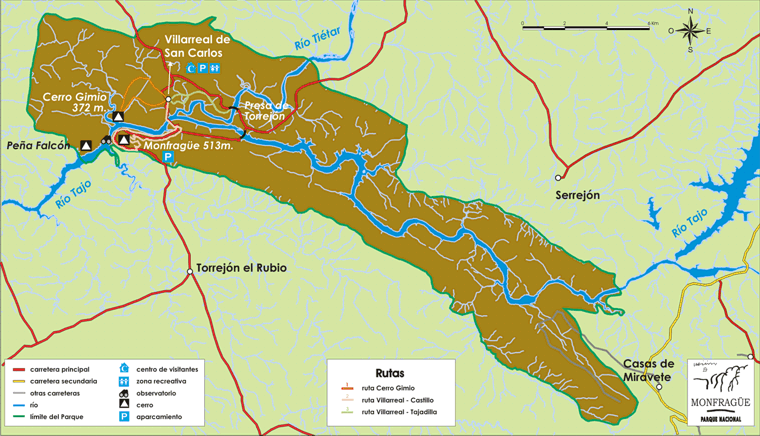
This is one side of the only street in Villareal de San Carlos. All the buildings are made of stone and there are a couple of places to stay and some tavernas as well.
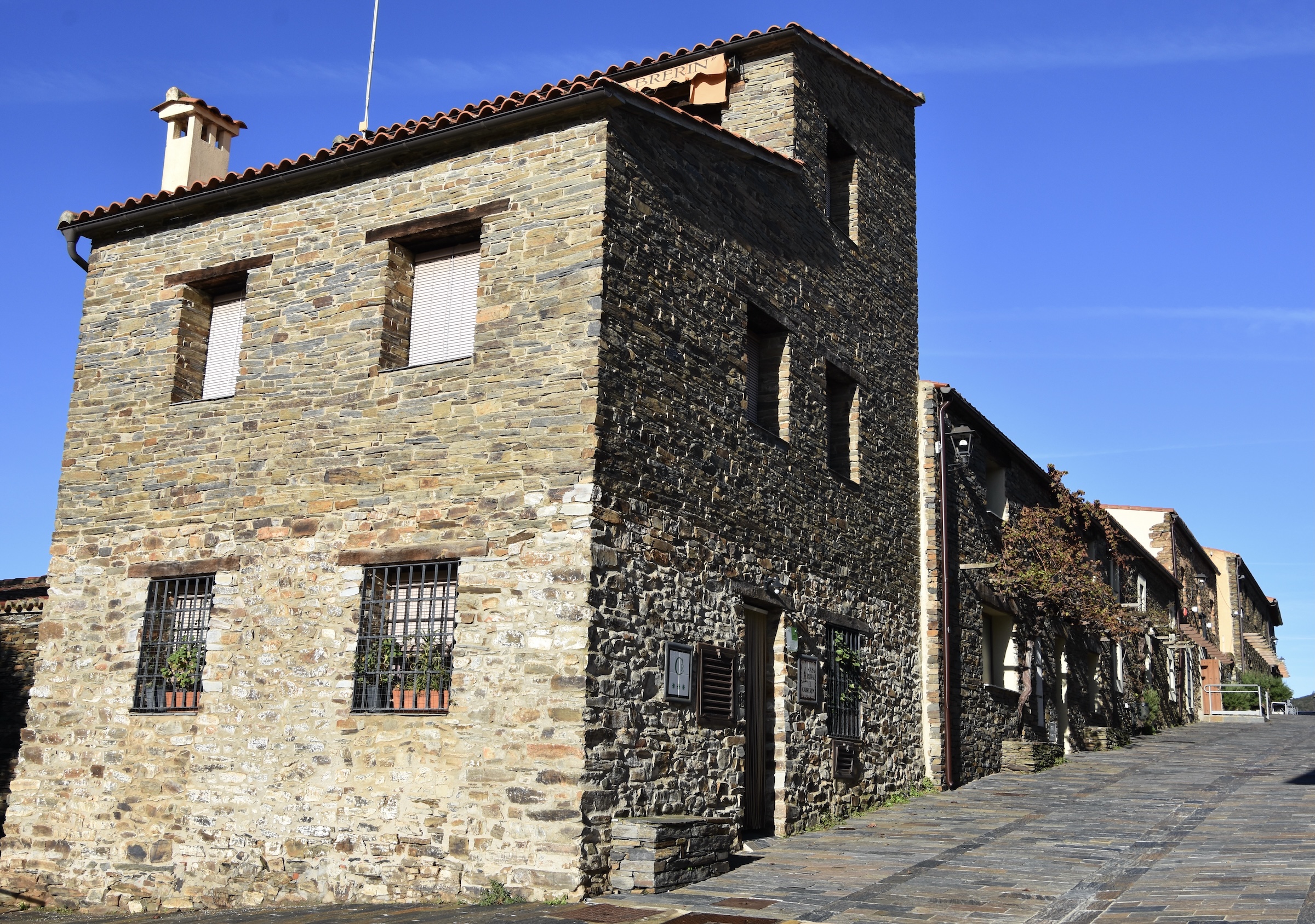
This is also where you’ll find the park headquarters and Interpretive Centre which has dioramas with some of the most sought after birds in Monfrague including the very rare Spanish Imperial Eagle which is the only bird endemic to the Iberian peninsula. It is the rarest bird of prey in Europe with a declining population of less than 1,000 birds.
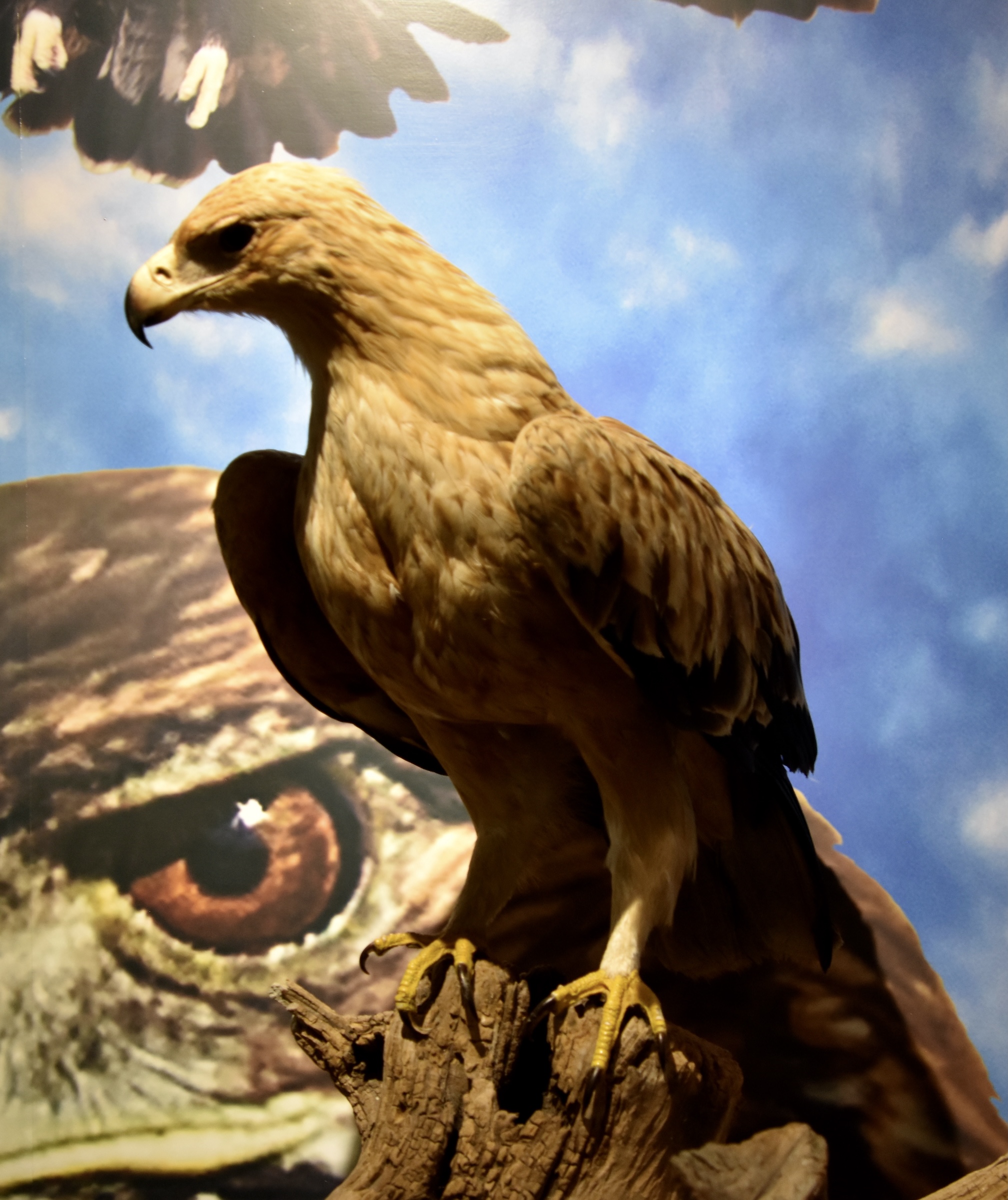
This traditional round building which used to house livestock provides evidence of Monfrague’s past as an agricultural area.
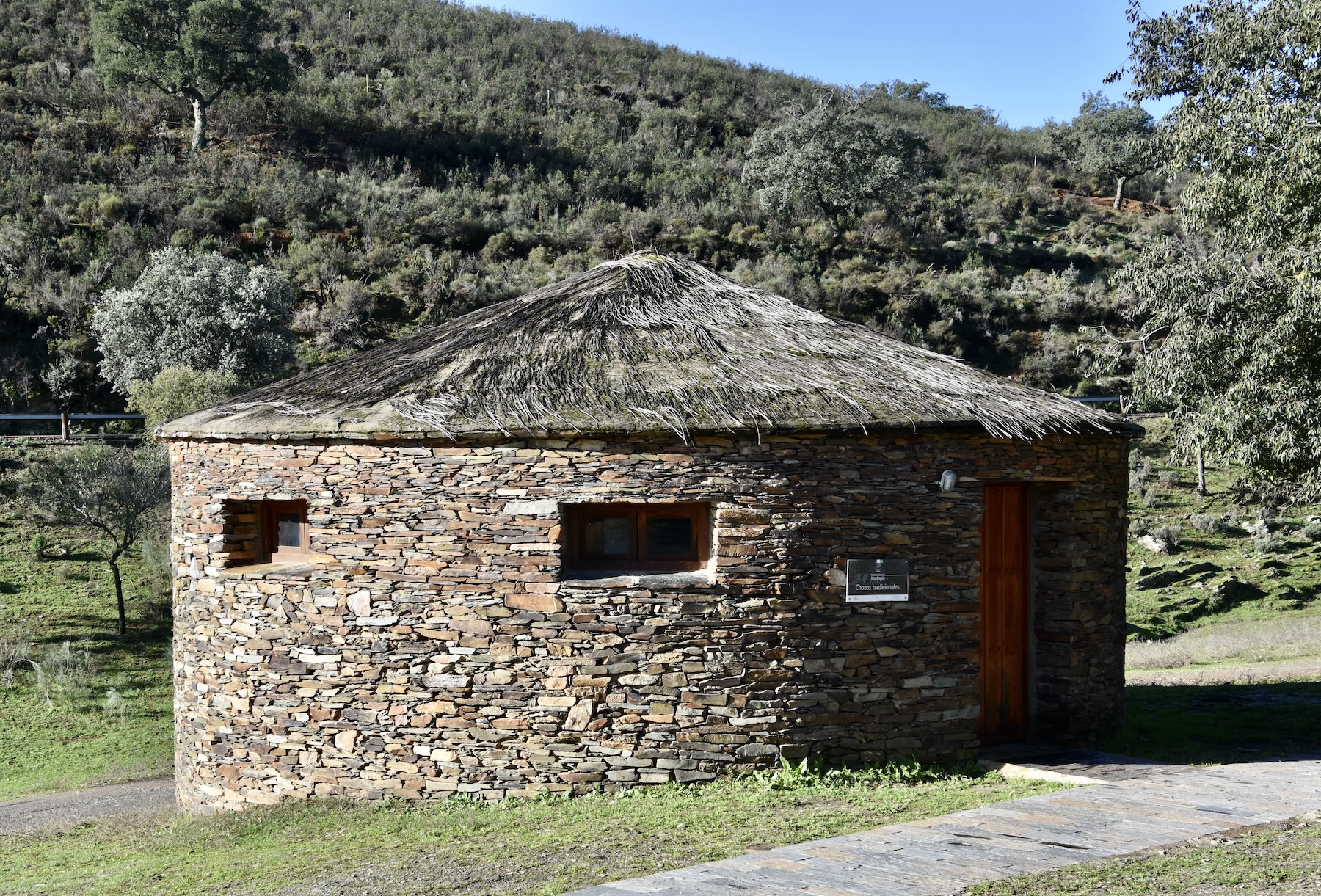
However, instead of spotting pigs, sheep or goats in the dehesa or Mediterranean forest you are far more likely to see a roe deer such as this doe. In fact, the deer rutting season in September and October attracts tourists to listen to the bellowing of the males and the displays they put on including butting heads with their antlers.
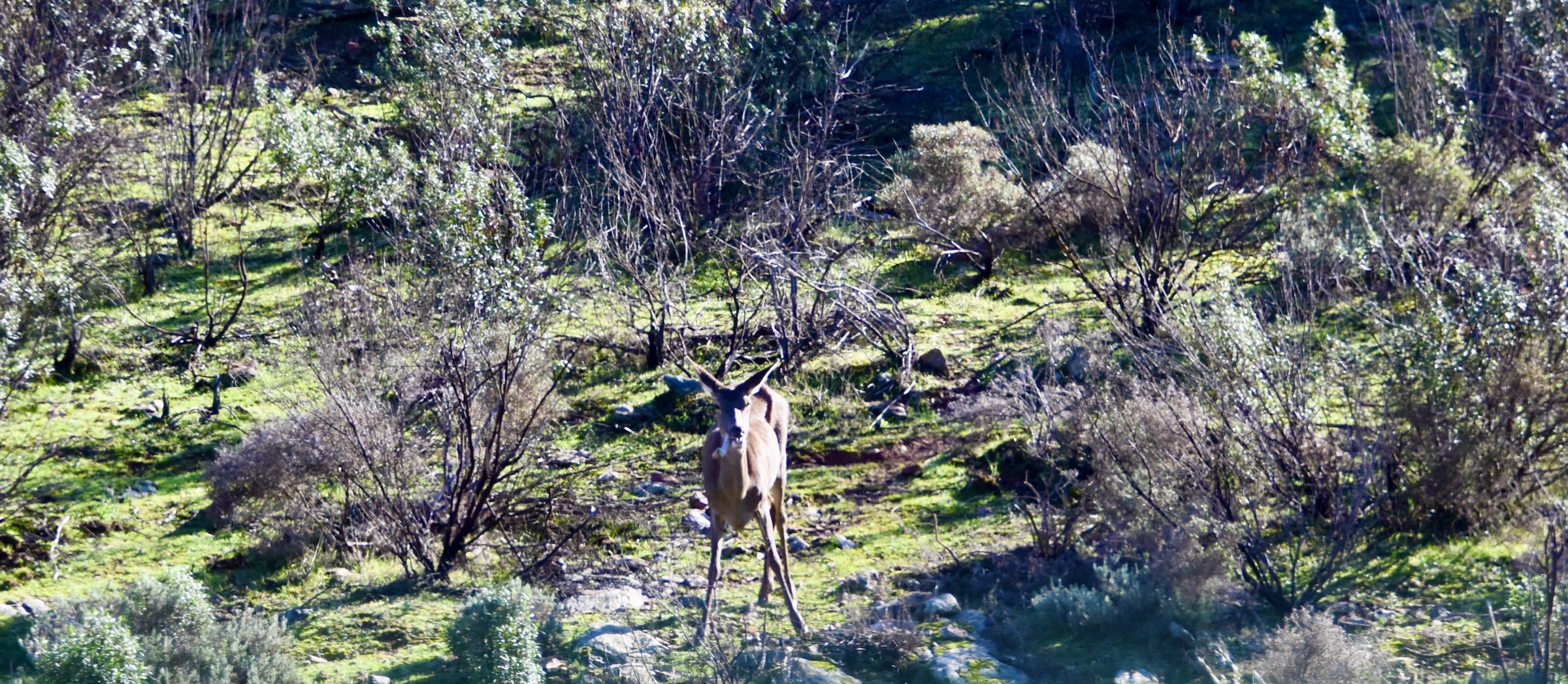
From Villareal de San Carlos we descend down to the Tagus River, cross it and then head steeply upward to the mirador at Salto del Gitano which is 300 metres above the river below. It is at the spot where the river seems to split the Monfrague in two as it makes its way to Portugal.
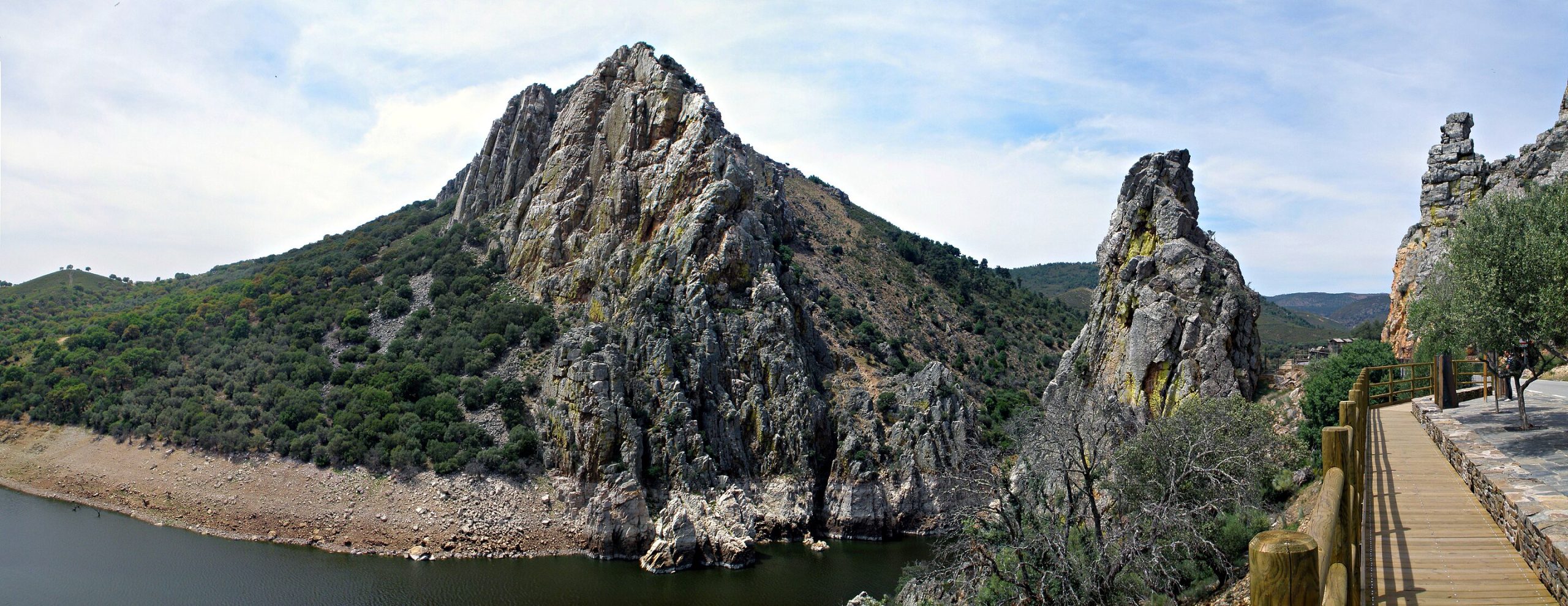
You need a wide angle lens to get a proper shot of this amazing place so I downloaded this one from Wikipedia.
Monfrague is a nesting place for black, griffon and Egyptian vultures as well as 10 pairs of Imperial eagles, black storks and the Eurasian eagle owl. Using high powered binoculars I can see griffon vultures on the top of the mountain and many more soaring overhead.
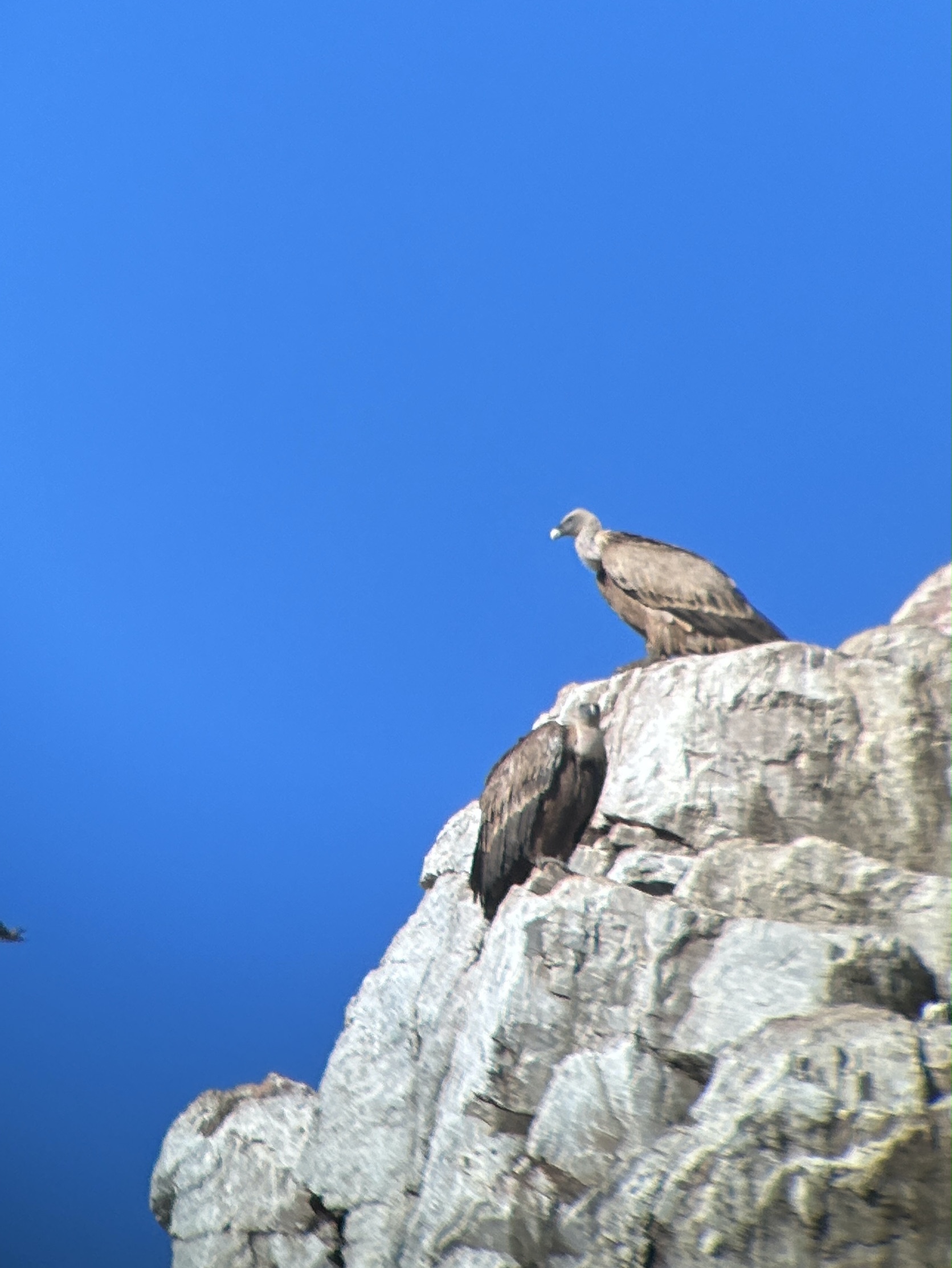
From Salto del Gitano we head much higher up to the parking lot below Monfrague castle.
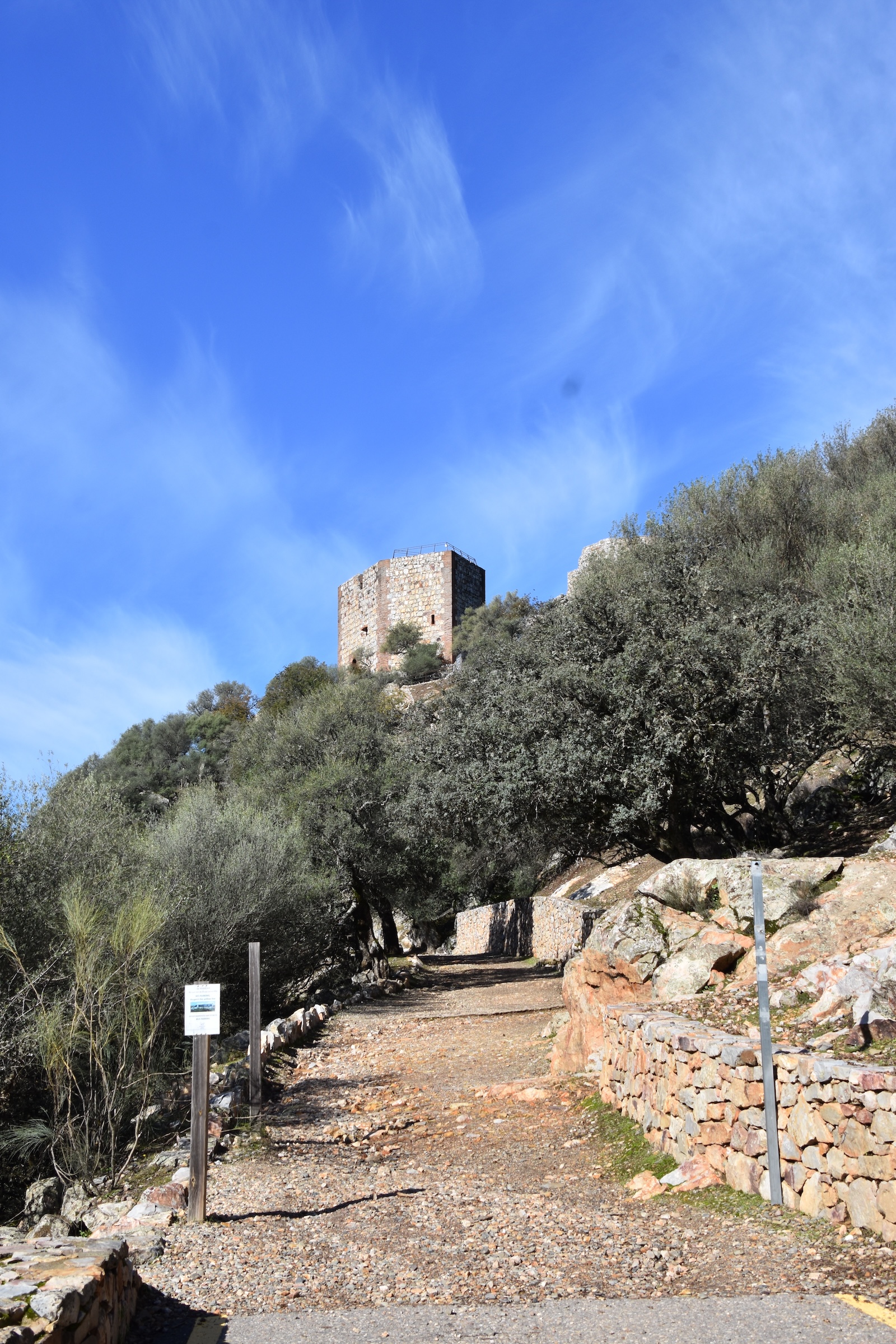
The castle sits on top of a quite narrow ridge with very steep cliffs on both sides and the views from up here are simply magnificent. In this direction you can see the Mediterranean forest on the slopes of Monfrague transition into dehesa forest below.
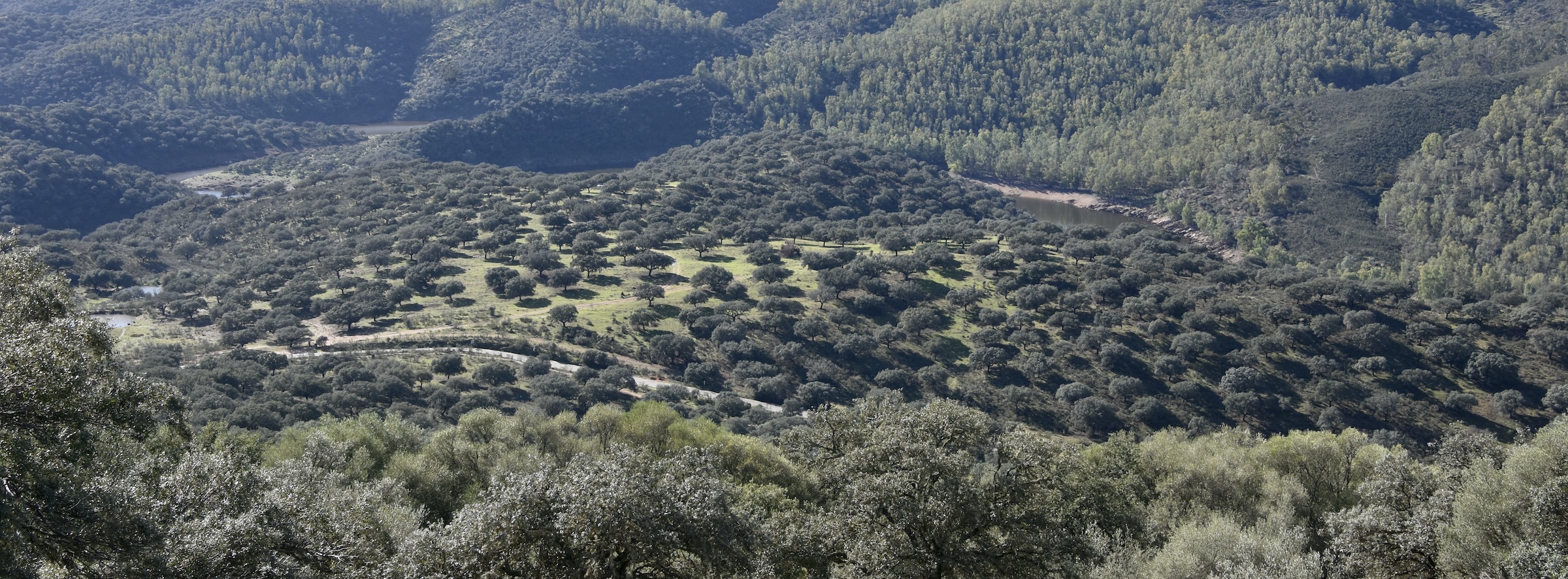
In another direction you can see the ruins of one of the castle’s battlements and the Tagus River bridge far below.
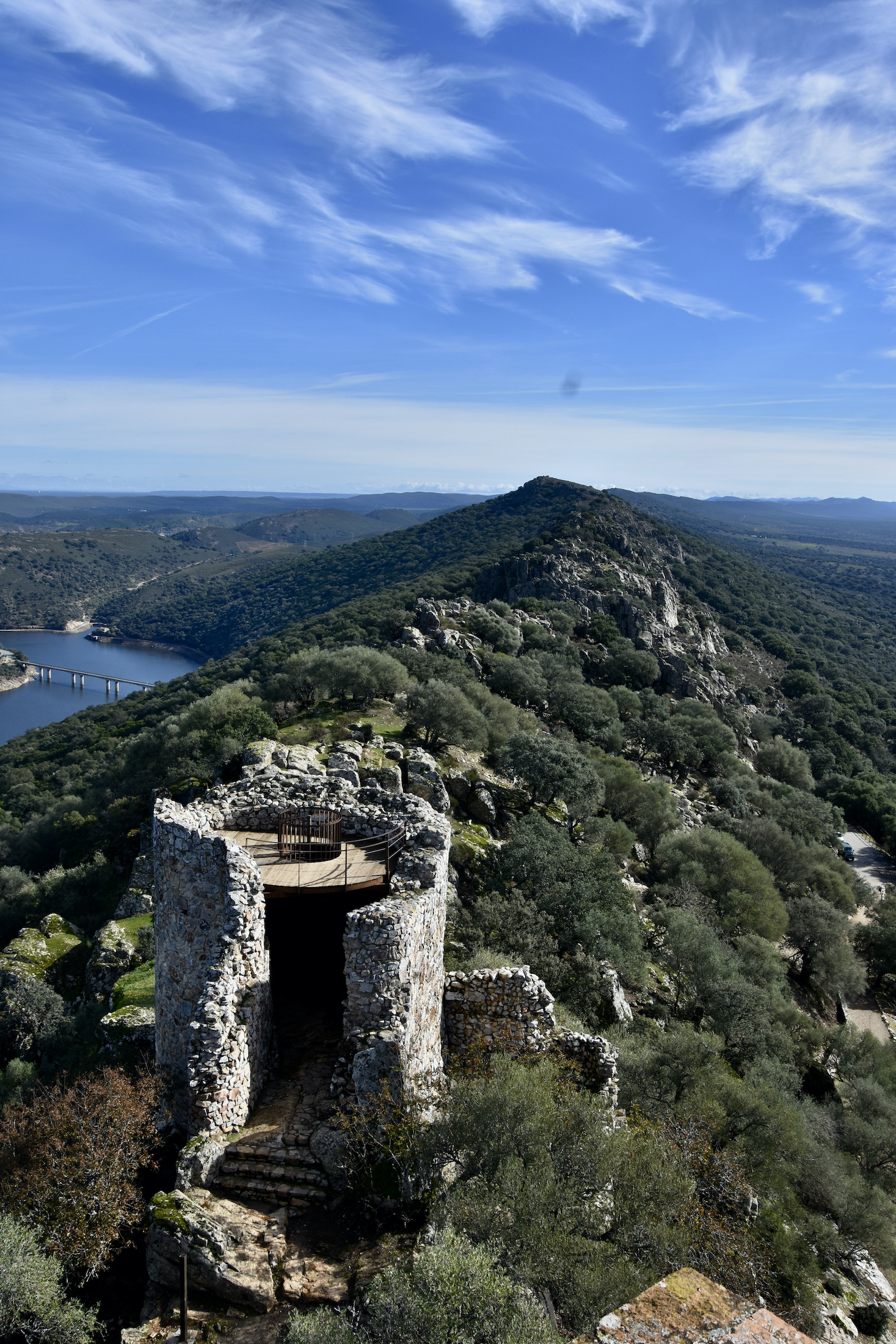
And in another direction the confluence of the Tagus and Tietar Rivers.
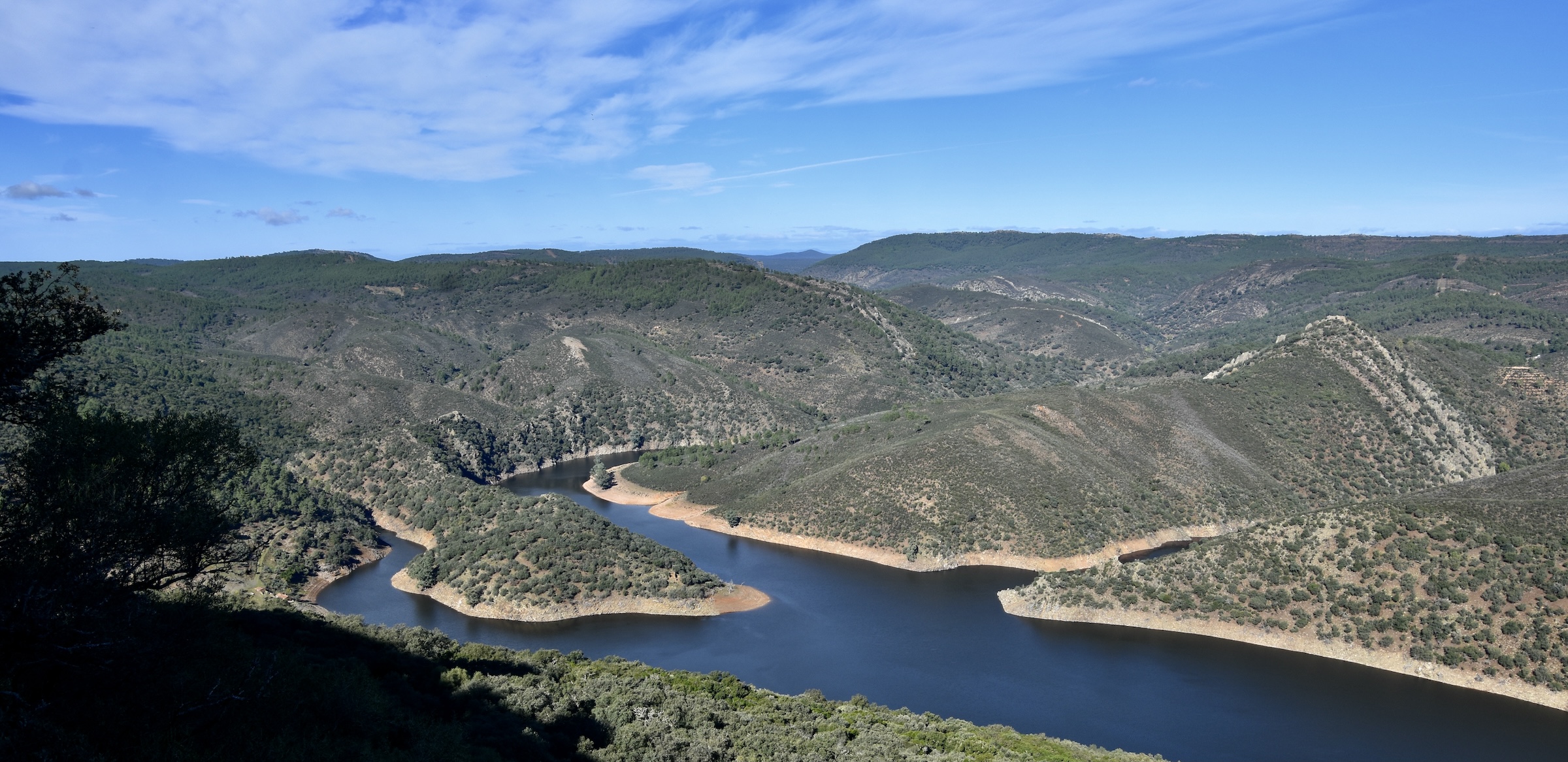
But the best views are straight up as the vultures are soaring literally just over our heads. Even if you are not a birder this is an amazing sight and the one that draws people from around the world to see. There are dozens of griffon and black vultures and the occasional raptor gliding effortlessly by overhead. It’s hard to describe just how transfixing a sight this really is with no sound but the wind coming up from the river below.
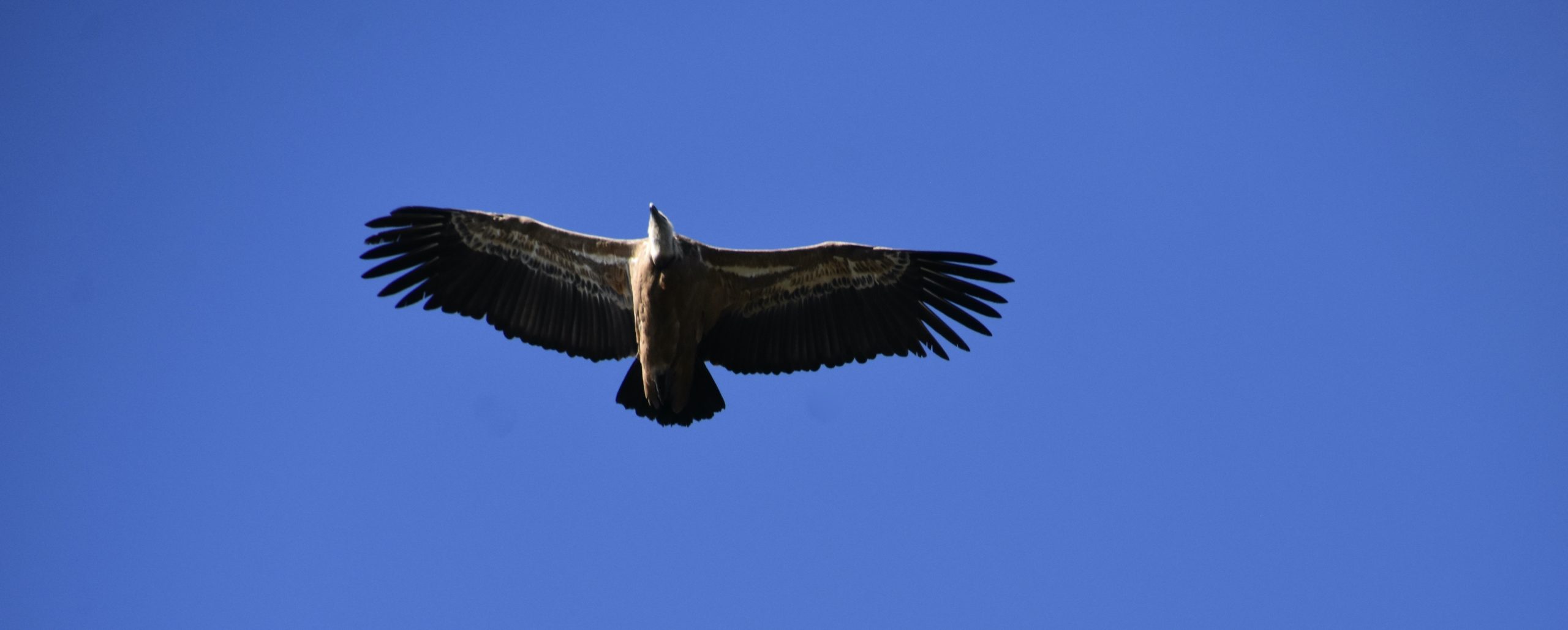
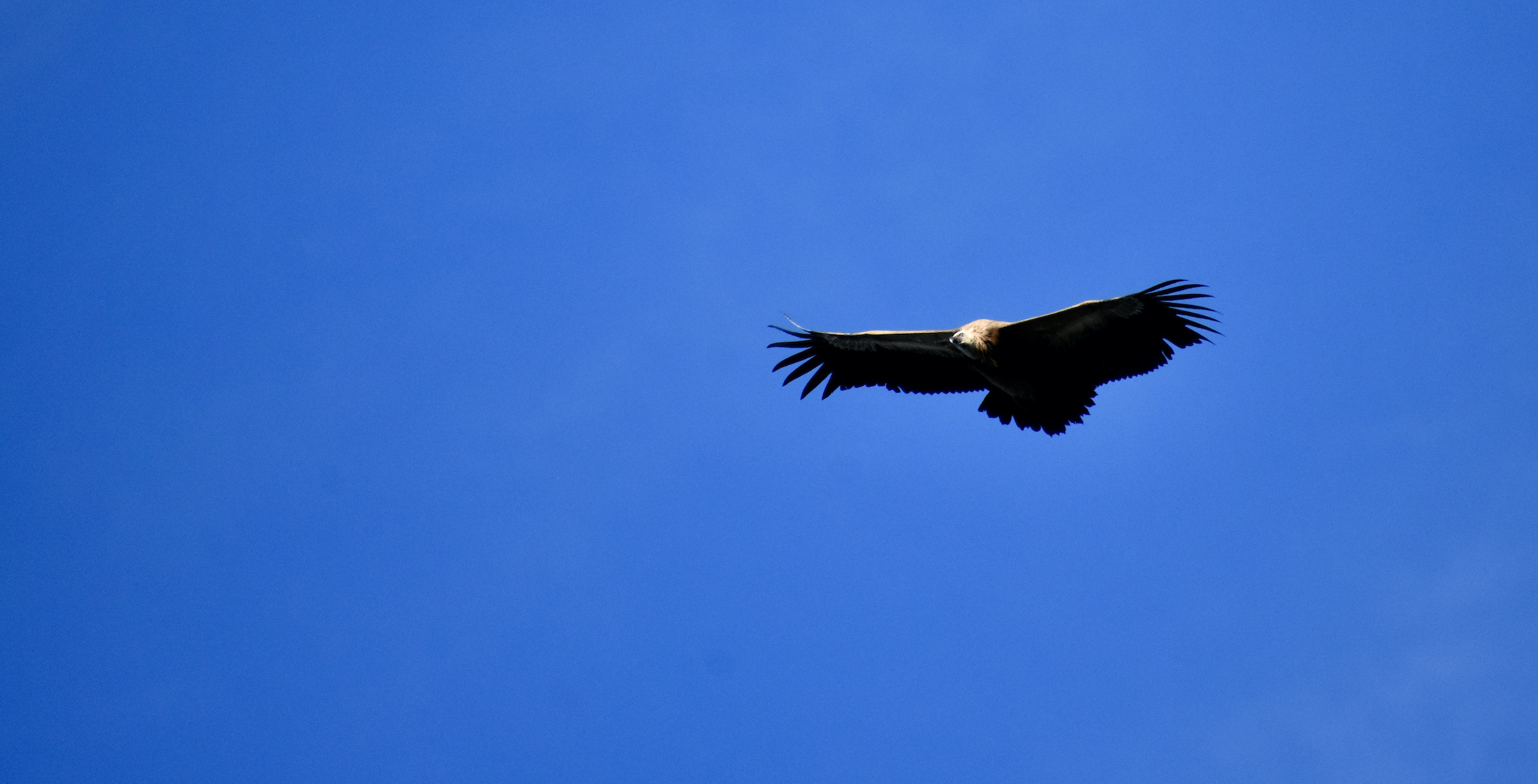
You will certainly want to get a picture of yourself in this almost surreal setting.
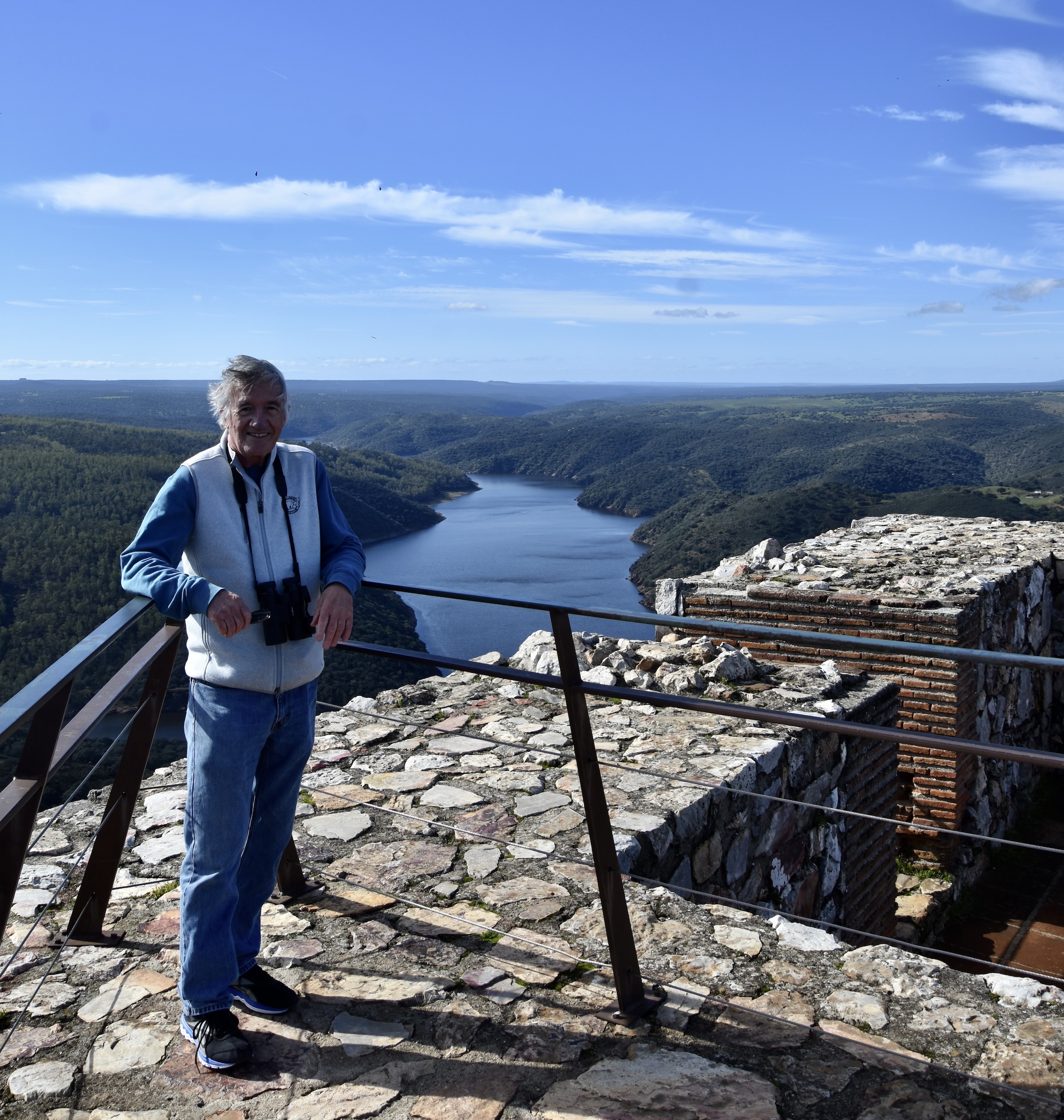
As far as I know there is only one finca remaining within the boundaries of Monfrague National Park and it is one that has been there for hundreds of years and that’s where we are headed next.
Las Corchuelas
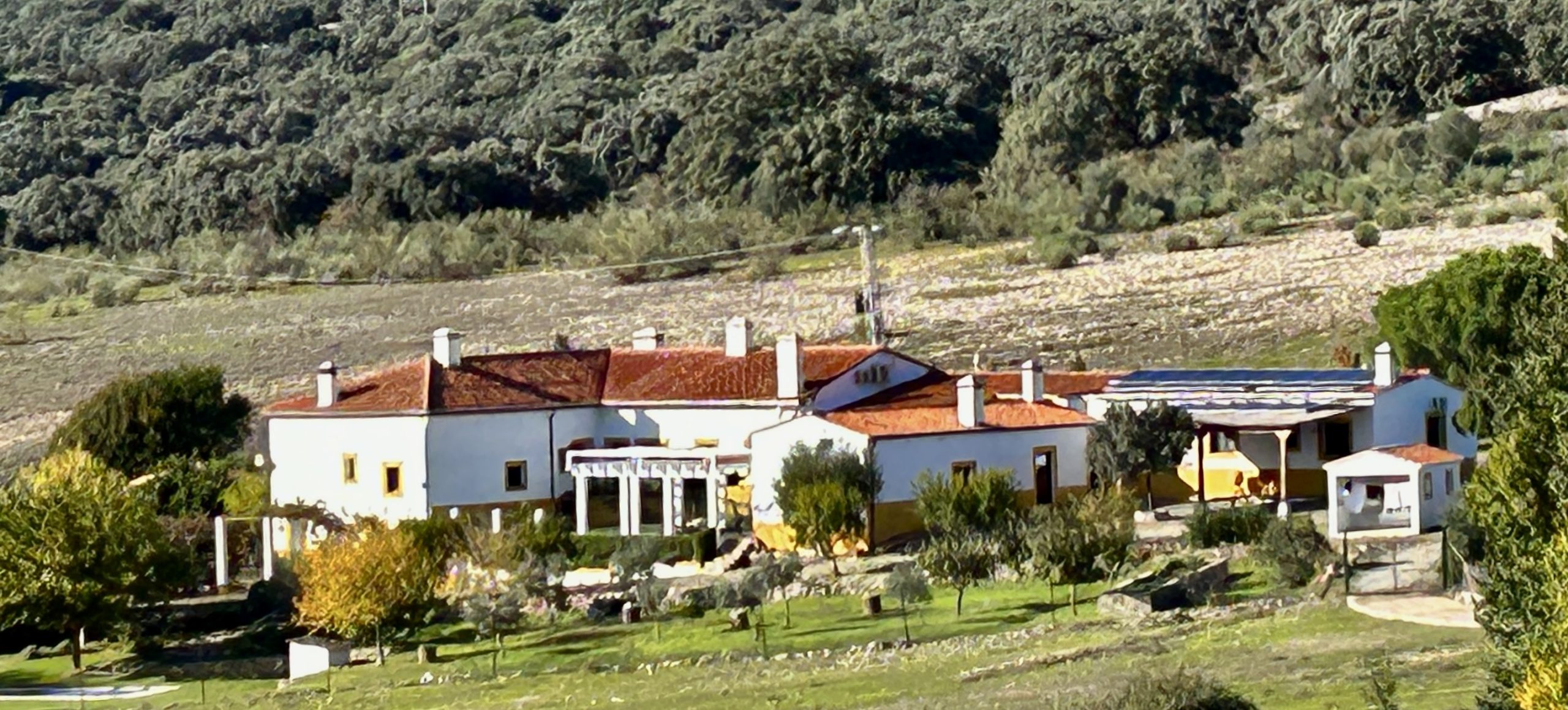
Las Corchuelas is a working finca which also offers guest accommodations and meals in a really interesting setting in Monfrague National Park. This is the owner Carmen who is a direct descendent of the family that has been living here for hundreds of years.
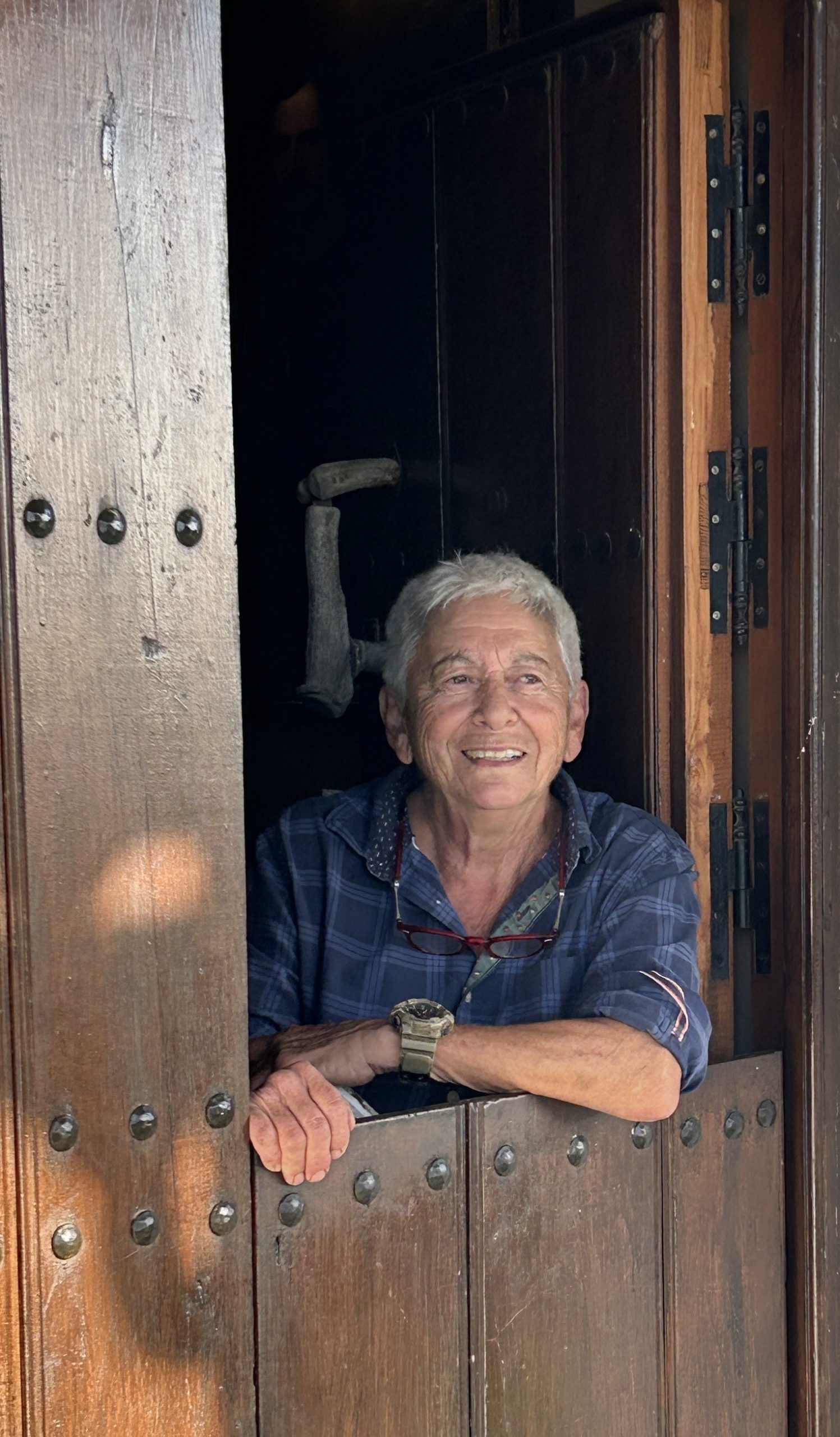
These are a couple of her ancestors.
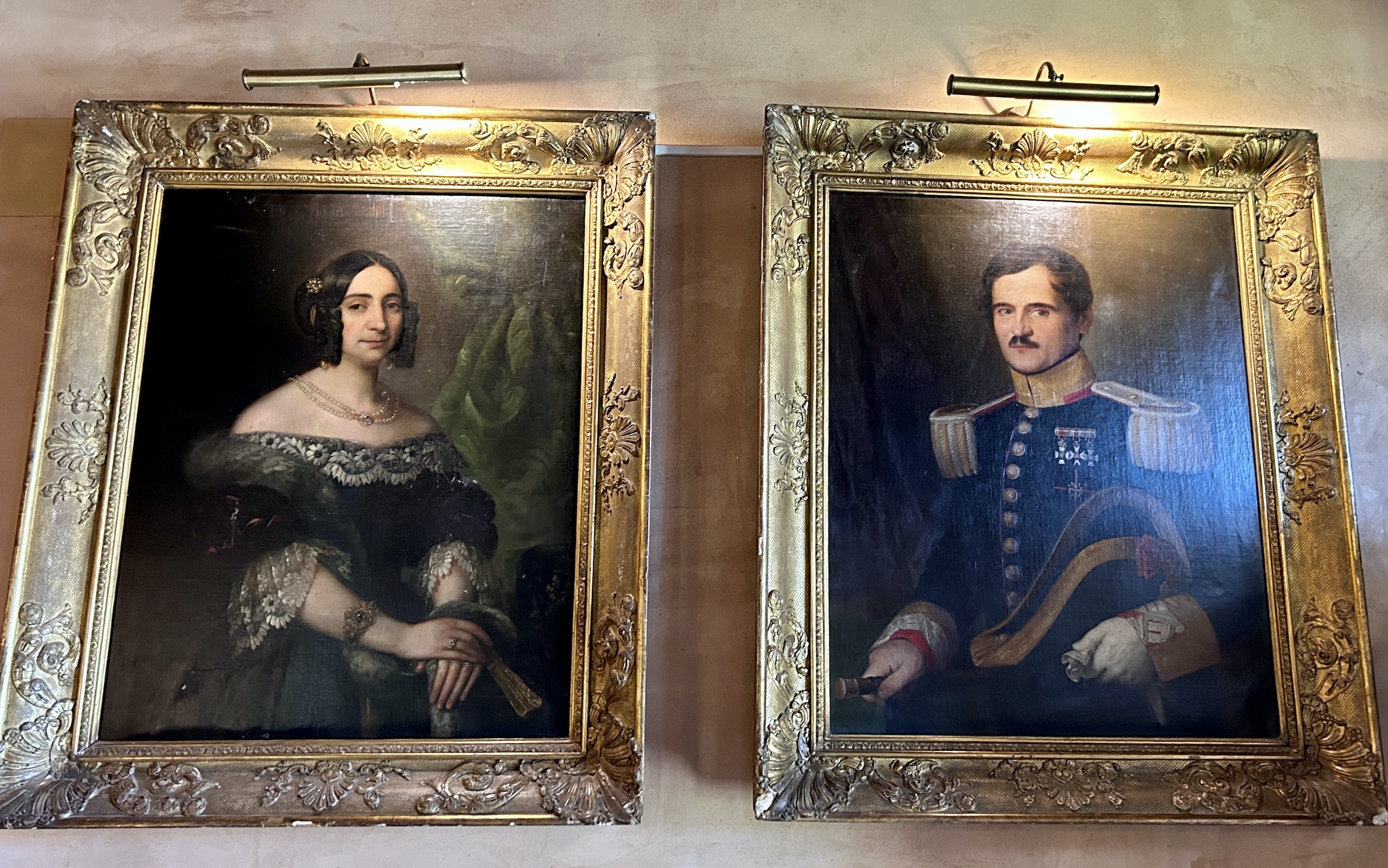
Before setting out to visit the black pigs that Carmen raises here, we sit down for a home made lunch that starts of with absolutely the best tomato soup I have ever tasted. One of the ingredients is grapes and try as I might, I cannot find any recipes on the internet that come close to how to make this.
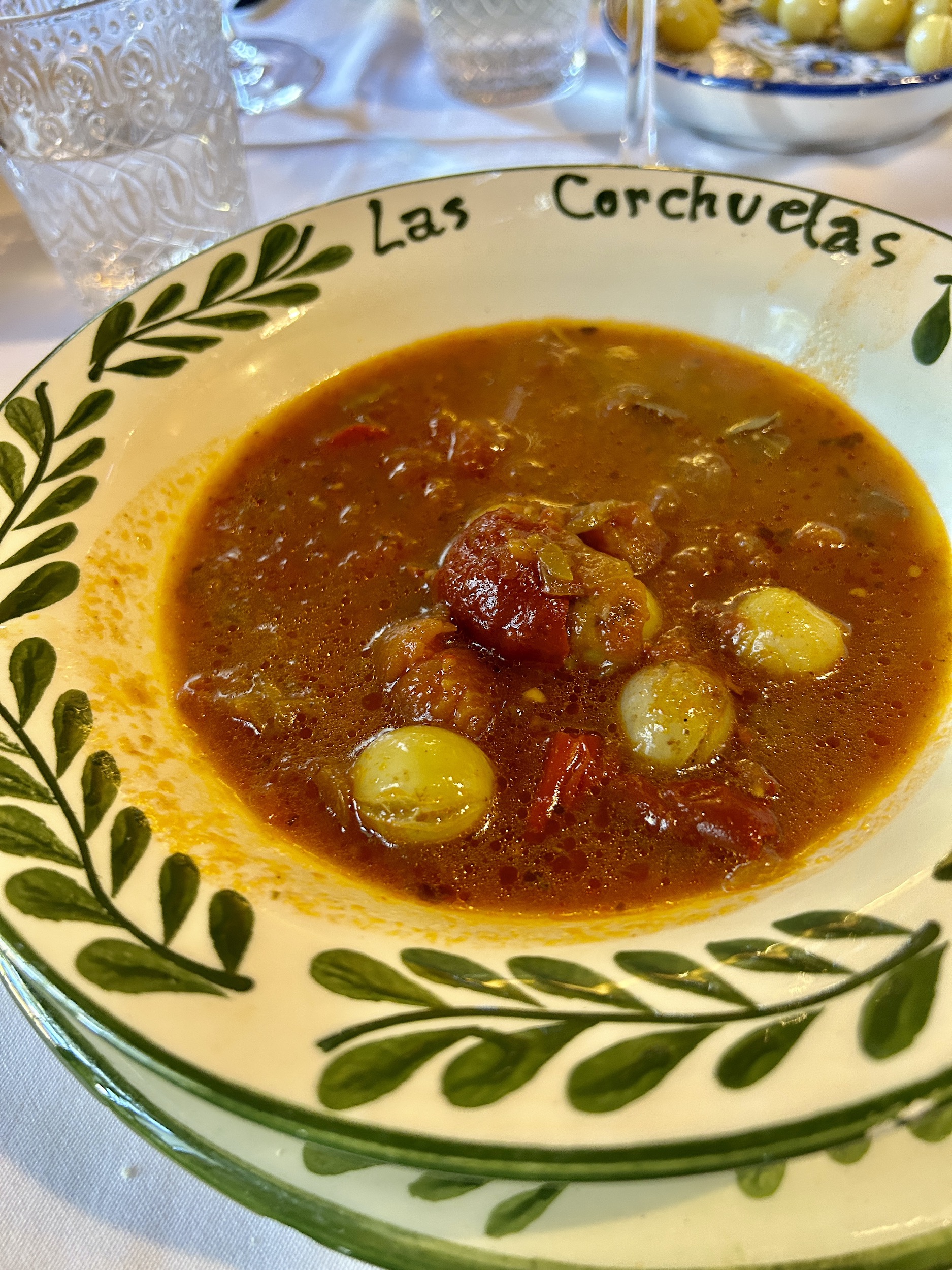
The soup is followed by a hearty venison stew which I presume came from one of the roe deer that are found in Monfrague National Park. It too is just plain delicious.
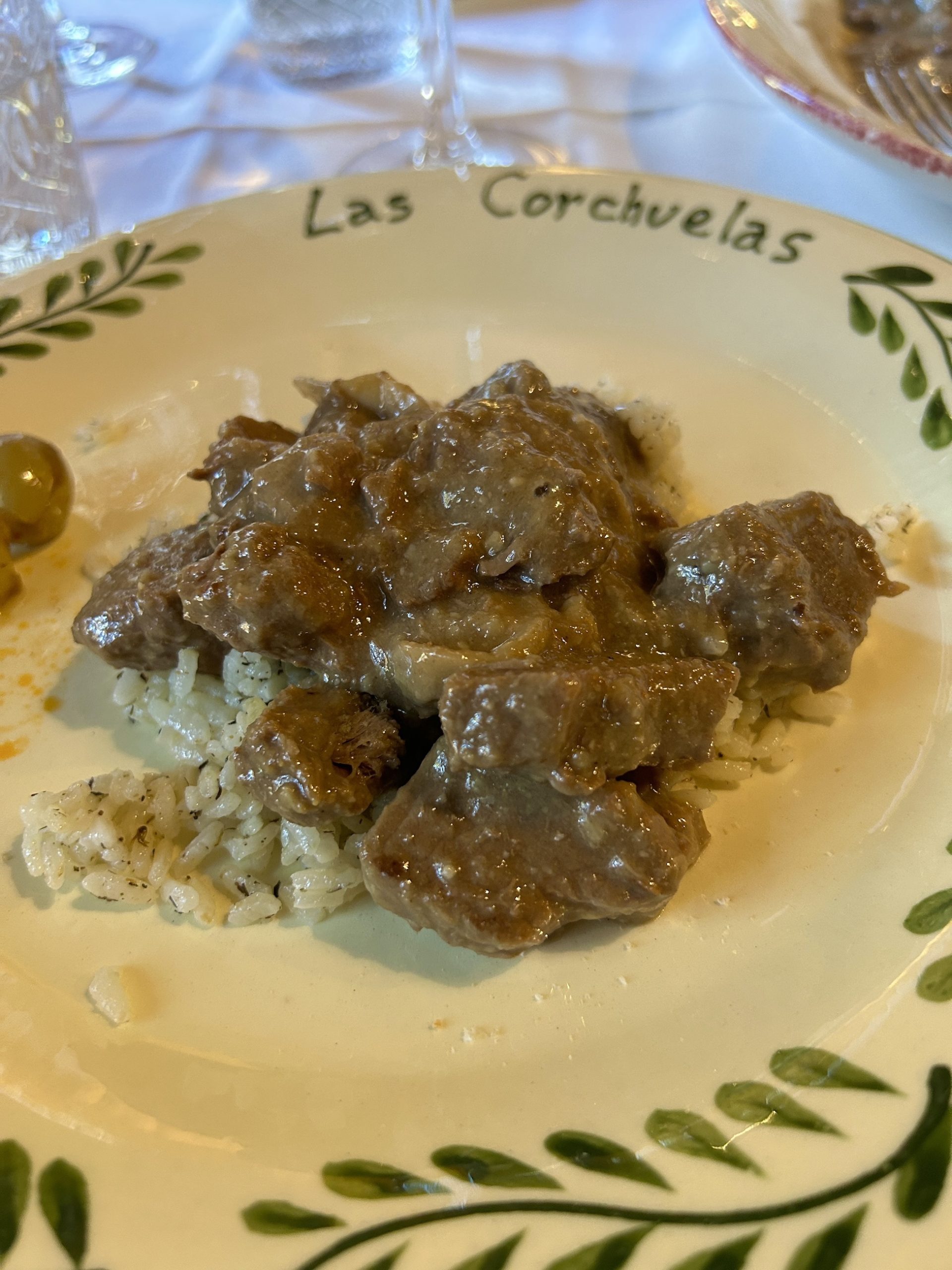
After lunch Carmen leads us on a walk to a spot in the dehesa where she raises black pigs. As you can see, she has an escort following her.
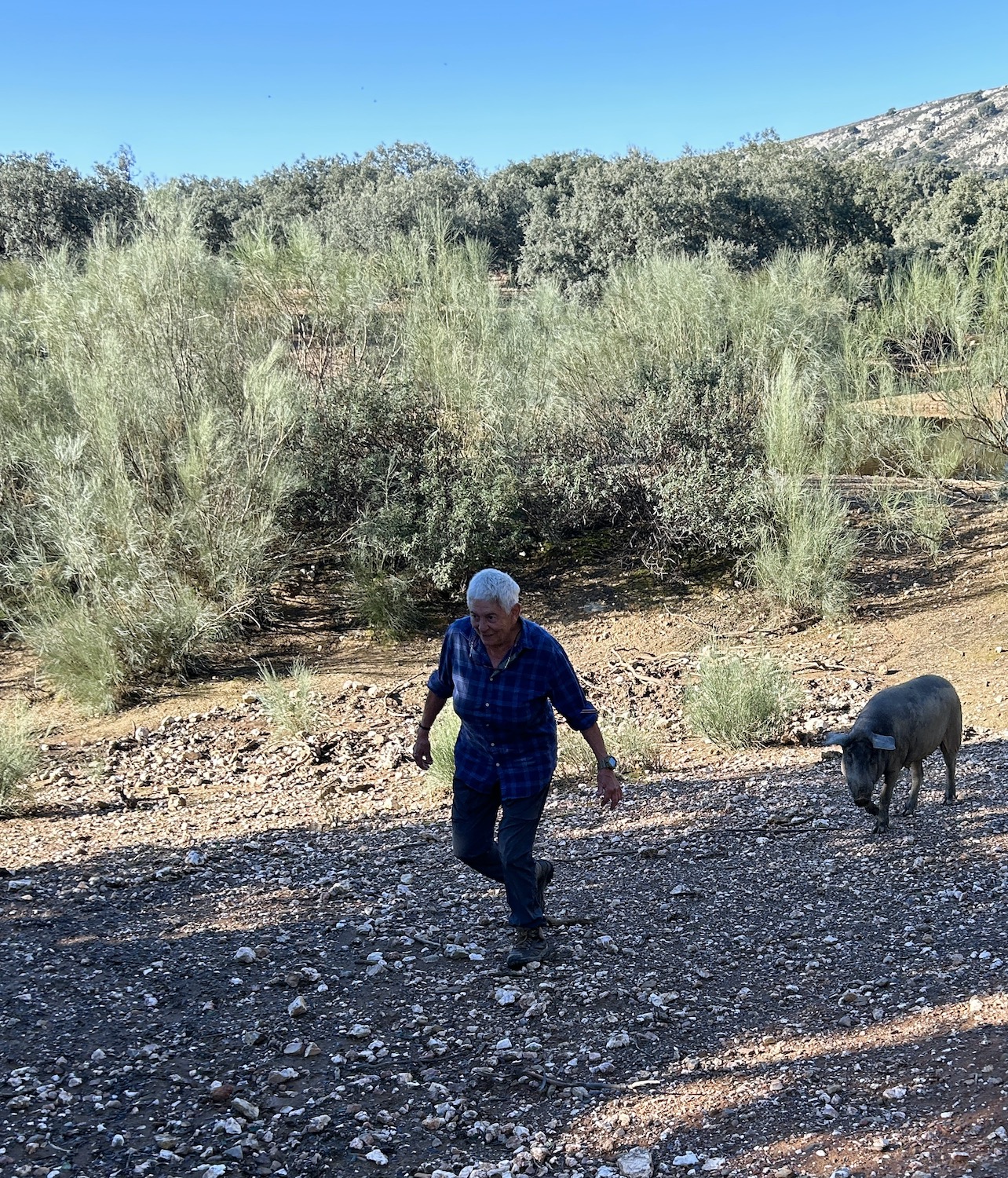
Her prized animal is this huge boar that acts as sire for the piglets.
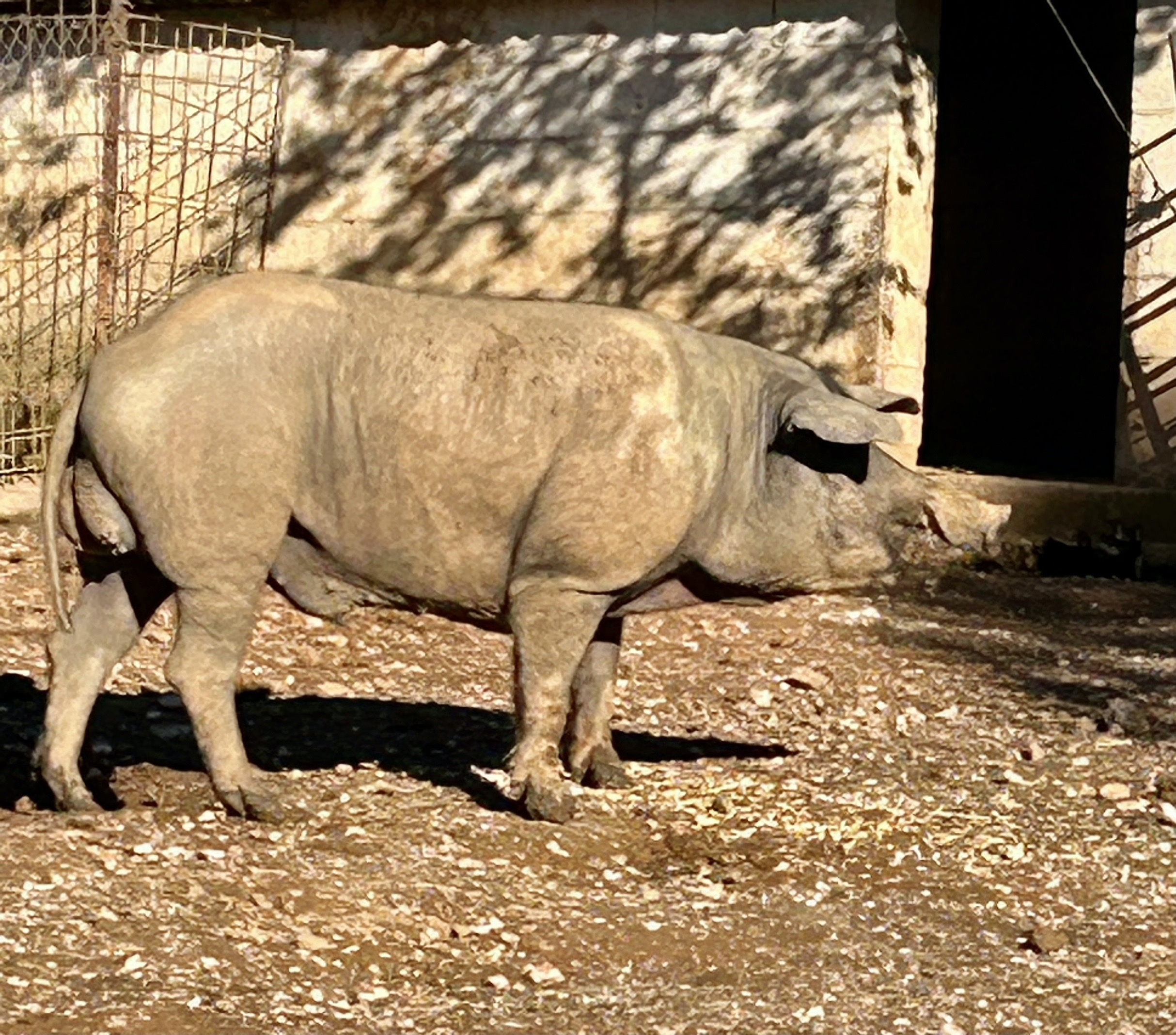
And his children.
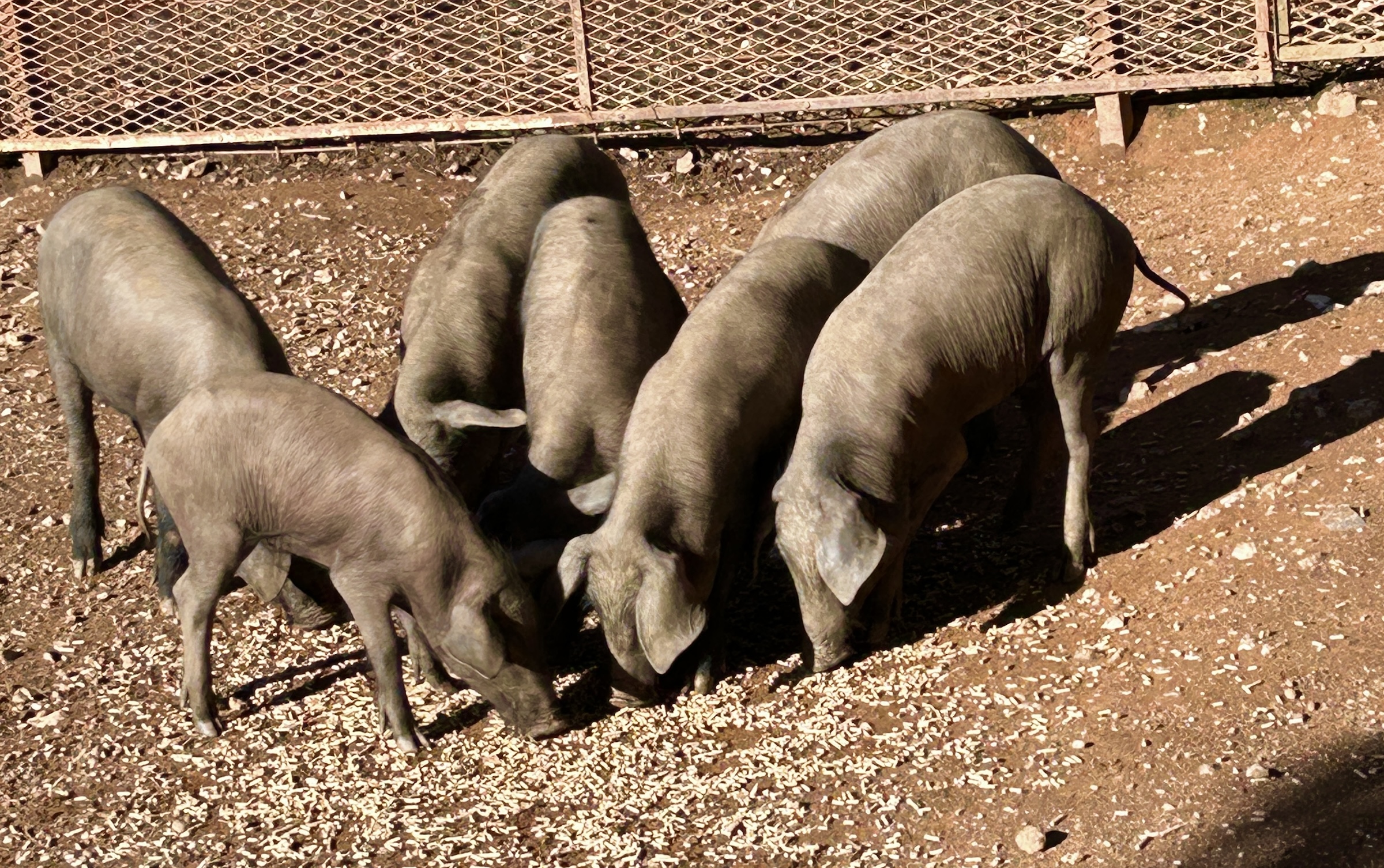
Well, that wraps up this post from Monfrague National Park and my adventures in the Extremadura. If I wasn’t pressed for time I could have written many more posts. Here are just a few examples of other places I visited during my visit and that should be on any itinerary to Extremadura.
A visit to some of the many fine bodegas is a must for any wine lover.
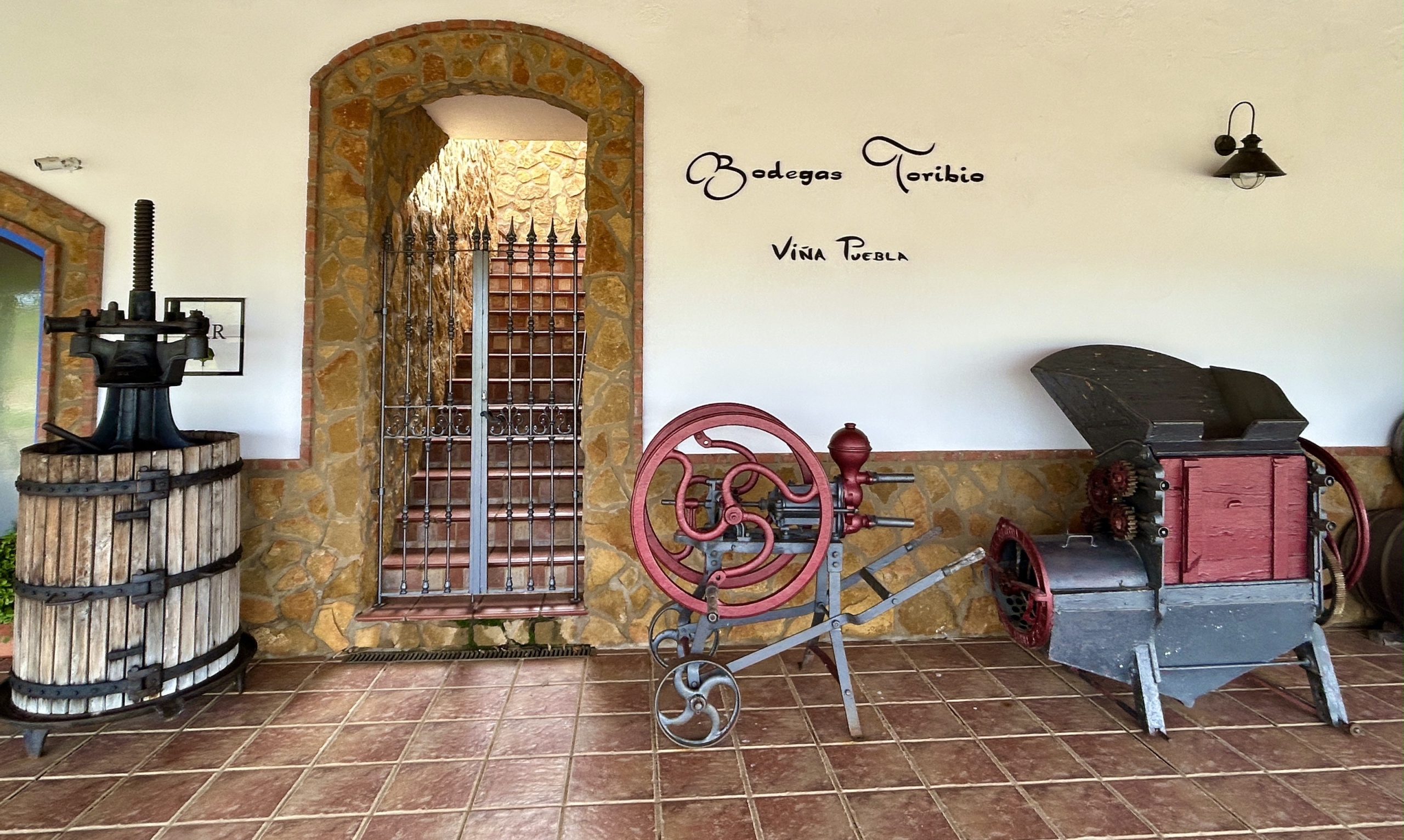
The castle and cemetery of Montanchez.
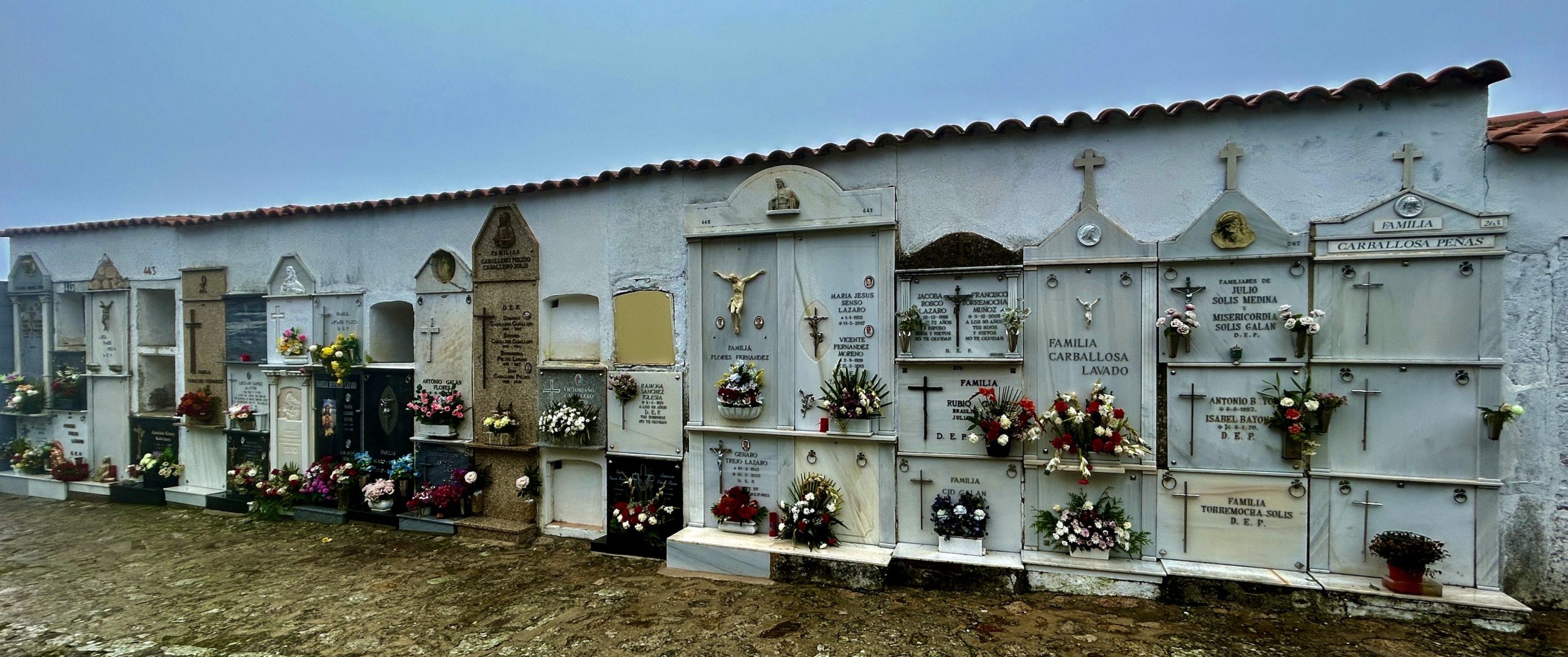
Walking the streets of Zafra.
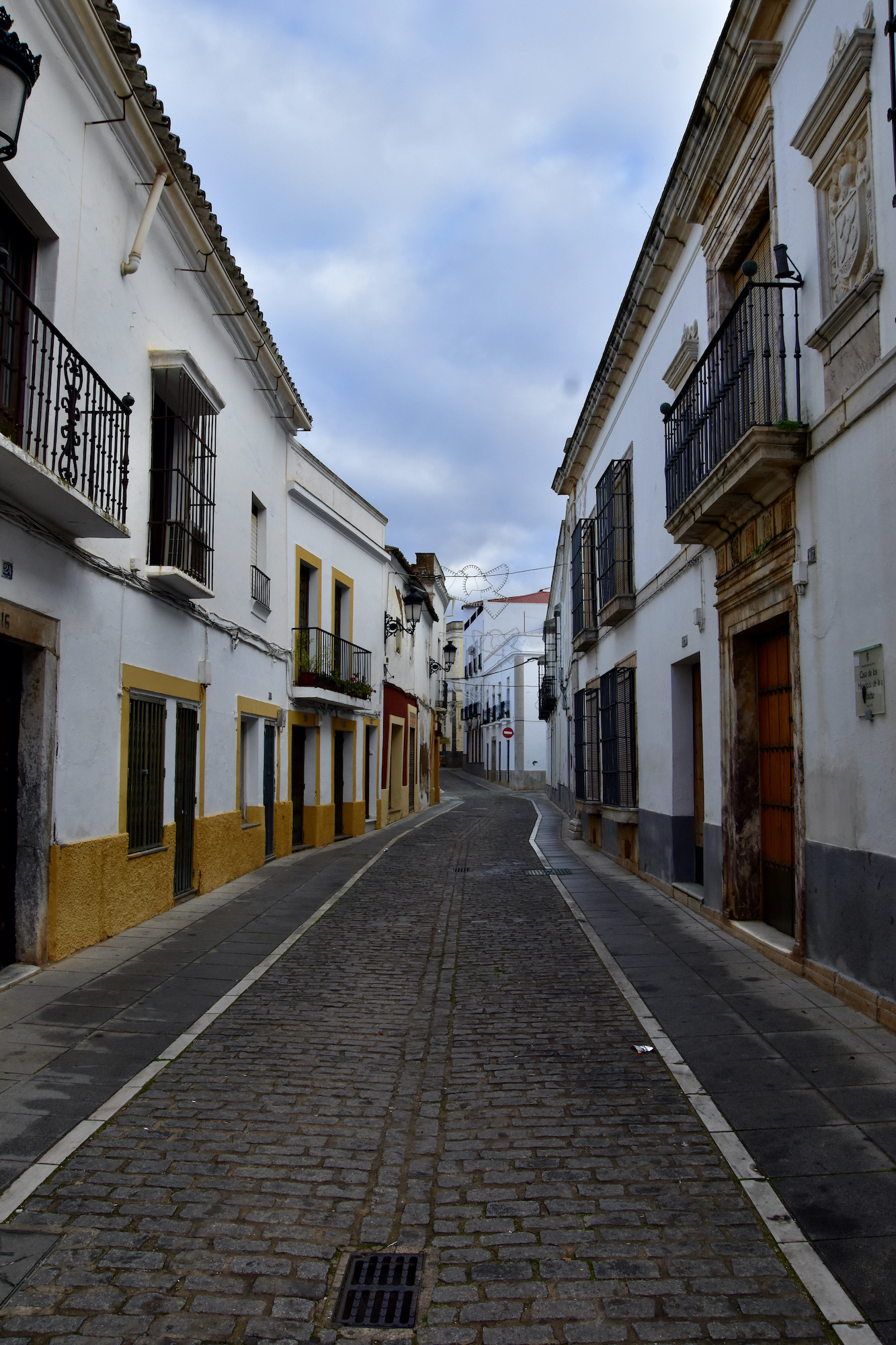
Or visiting Francisco Pizarro’s home town of Trujillo.
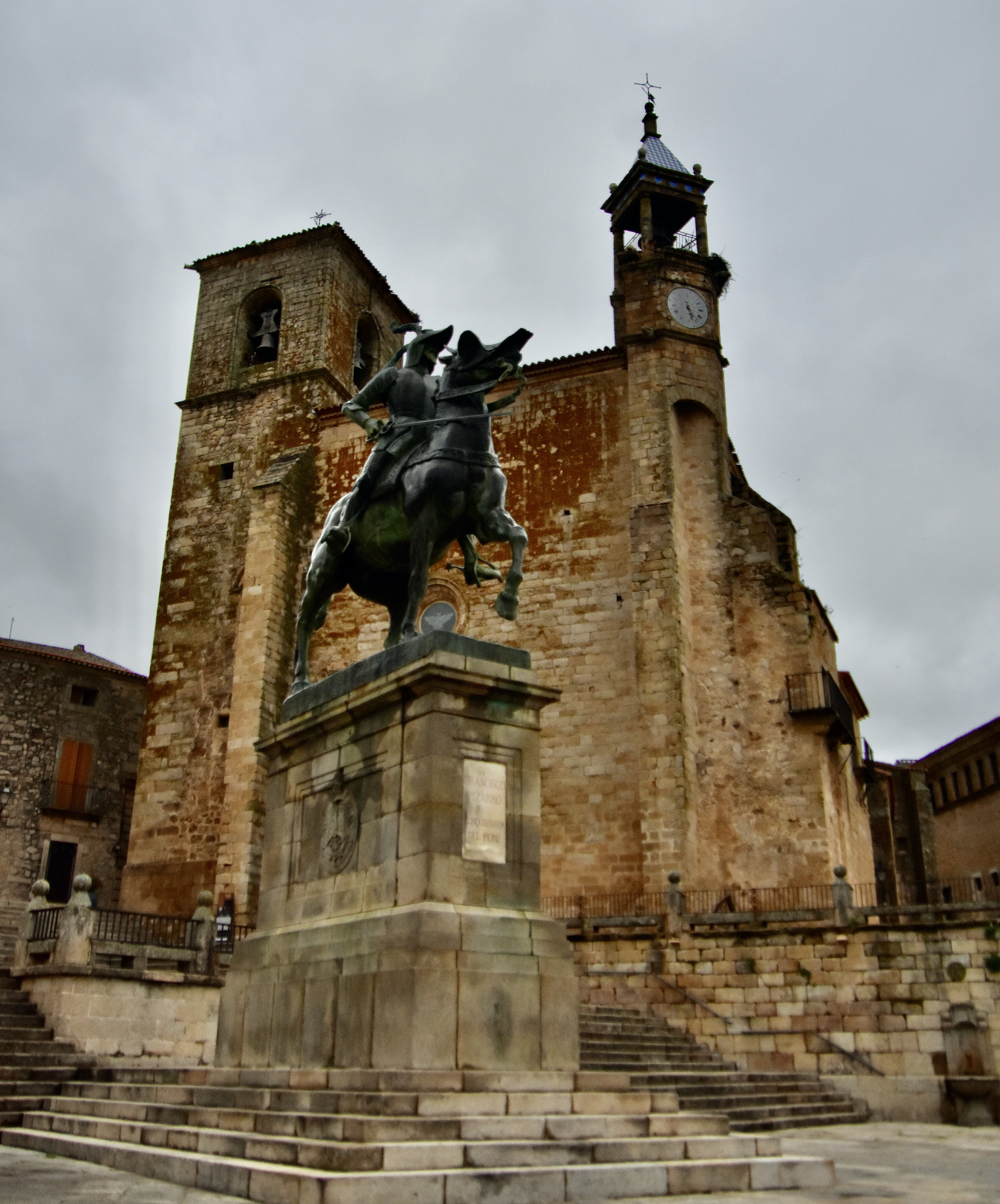
So what Monfrague does for nature lovers, these other towns do for history buffs.
I will be returning to Spain in April to visit the cities of Seville, Cadiz and Jerez. Stay tuned.

